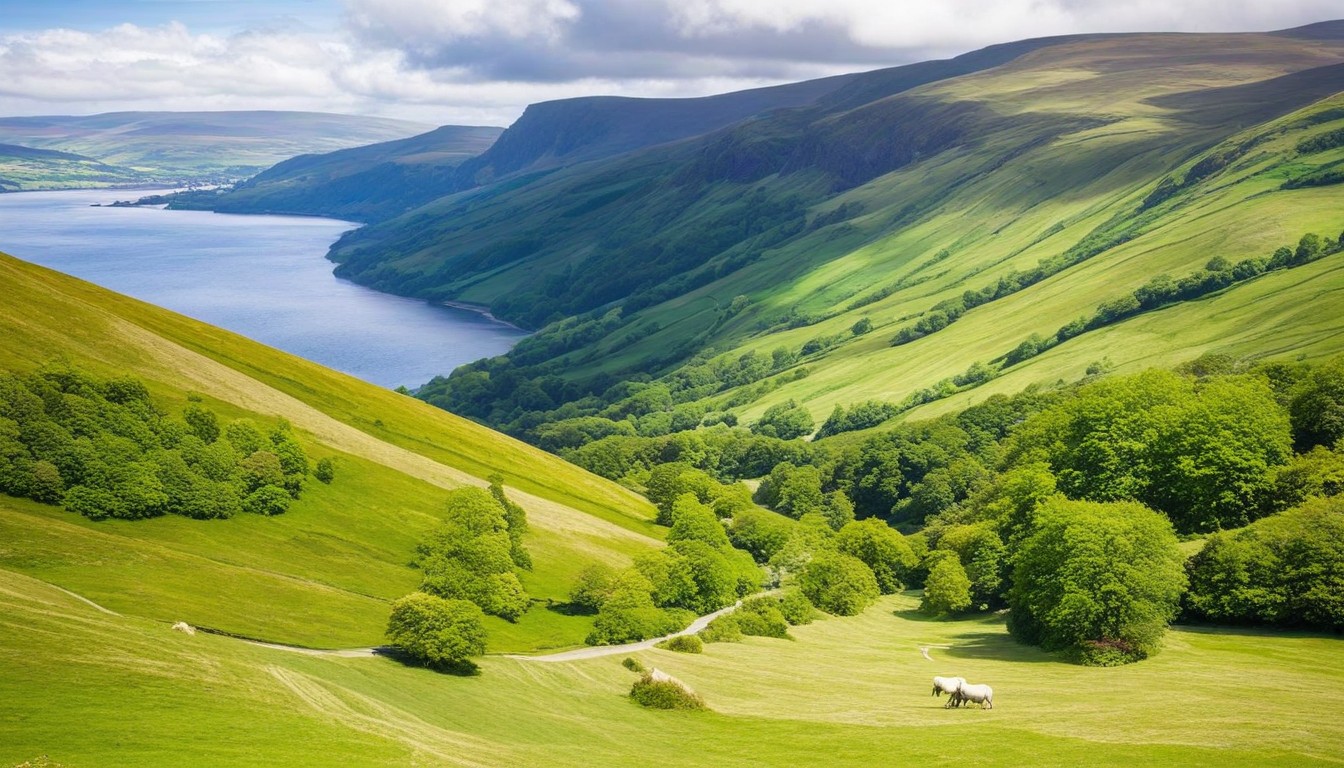Journeys Unveiled: Embark on a Magnificent Odyssey through British Exploration
Introduction
British exploration holds a storied past, filled with intrepid adventurers whose voyages shaped the course of history. From the brave exploits of Sir Francis Drake and Captain James Cook to the remarkable discoveries of David Livingstone and Ernest Shackleton, British explorers have left an indelible mark on the world.
Their journeys not only expanded geographic knowledge but also fostered cultural exchanges, scientific advancements, and vast empires. Today, as we embark on our own explorations, it is essential to recognize the significance of delving into the United Kingdom’s rich tapestry of history, culture, and natural beauty.
A Legacy That Transcends Borders
The impact of British exploration reverberates across continents and through centuries. It has shaped global trade routes, redrawn maps, and forged connections between distant lands. From Vasco da Gama’s discovery of a sea route to India to James Cook’s charting of unexplored territories in the South Pacific, these bold explorers opened up new frontiers for commerce and colonization.
The British Empire itself was built upon these foundations laid by intrepid individuals willing to venture into uncharted territories. By understanding their legacy and retracing their steps within the United Kingdom, travelers can gain a deeper appreciation for how past expeditions have shaped our modern world.
The United Kingdom: A Treasure Trove for Explorers
For those seeking to immerse themselves in captivating history or bask in awe-inspiring landscapes, few destinations rival the United Kingdom. Its compact size belies its immense diversity; within its borders lie ancient ruins steeped in mystery, majestic castles that once housed monarchs’ ambitions and intrigues, quaint villages frozen in time like living museum pieces – all woven together by stunning natural scenery that ranges from rugged coastlines to rolling hills and tranquil lakes.
The allure of the UK lies not only in its iconic landmarks but also in the subtle nuances of its culture, the vibrant blend of modernity and tradition that can be felt on every street corner. This makes it an ideal destination for travelers yearning to immerse themselves in history, culture, and natural beauty all at once.

Stonehenge: Unraveling the Mysteries of this Ancient Monument
Exploring Origins and Construction Theories Stonehenge, a prehistoric monument located on Salisbury Plain in Wiltshire, England, has captivated the imagination of both scholars and visitors for centuries. Its origins remain shrouded in mystery, with various theories attempting to explain its construction.
Some believe it was built by ancient druids as a religious temple, while others suggest it was an astronomical observatory or even a burial site. The monument consists of massive stone megaliths arranged in circular patterns, each weighing several tons.
To this day, the methods used by our ancestors to transport and erect these colossal stones baffle experts. The careful alignment of Stonehenge with celestial events such as solstices adds to its mystique.
Significance in British History and Folklore Beyond its enigmatic construction, Stonehenge holds immense significance in British history and folklore.
Dating back to around 3000 BCE, this remarkable structure symbolizes the high level of technical skill possessed by our ancient ancestors. It served as a gathering place for rituals and ceremonies, providing insight into the religious practices and cultural beliefs of early Britons.
Throughout history, Stonehenge has been referenced in countless literary works and continues to inspire artists across various disciplines today. Its timeless presence on the landscape stands as a testament to human ingenuity and deepens our connection with the past.
Hadrian’s Wall: Tracing the Footsteps of Roman Conquerors
Historical Context and Purpose of the Wall Stretching across northern England for 73 miles (117 kilometers), Hadrian’s Wall stands as an enduring testament to both Roman engineering prowess and their desire to secure their imperial border.
Emperor Hadrian ordered its construction in 122 CE to mark the northernmost boundary of Roman Britannia. The wall served multiple purposes: it acted as a physical barrier to control the movement of people, goods, and livestock, while also serving as a symbol of Roman might and influence.
Guard towers and fortified gates were strategically placed along its length, allowing for surveillance and military control.
Exploring Preserved Sections and Nearby Roman Forts
Today, visitors can explore sections of Hadrian’s Wall that have been well-preserved over centuries. The wall offers an unparalleled opportunity to engage with ancient history by walking in the footsteps of Roman soldiers who once patrolled this formidable structure.
Sites such as Vindolanda present archaeological treasures like artifacts and ancient writings that offer valuable insights into daily life along the wall. Additionally, nearby forts such as Housesteads and Birdoswald provide further context on Roman military operations and their efforts to maintain control over this distant frontier.

Tower of London: Delving into Medieval Power Dynamics
History as a Royal Palace, Prison, and Treasury The Tower of London stands stoically on the banks of the River Thames, bearing witness to over 900 years of British history. Originally built as a symbol of royal power by William the Conqueror in 1078, it has served numerous functions throughout its existence.
As a royal palace, it provided residence for monarchs during their reigns. However, the Tower also gained notoriety as a prison where notable figures like Sir Walter Raleigh and Anne Boleyn were held captive.
Additionally, it functioned as a treasury where England’s most precious jewels were stored under high security.
Crown Jewels Exhibition and Famous Ghost Stories
A visit to the Tower today is incomplete without exploring its captivating Crown Jewels exhibition. Displayed within the Jewel House, these priceless symbols of royal authority glitter with unparalleled brilliance.
Crowns, scepters, and ceremonial swords encrusted with diamonds and gemstones dazzle visitors, conveying the magnificence of Britain’s monarchy. However, beneath this splendor lies a darker side to the Tower’s history.
It is reputed to be one of the most haunted places in England, with ghostly apparitions said to roam its corridors and cells. Tales of spectral figures like the “White Lady” and the beheaded Anne Boleyn continue to intrigue visitors, adding an eerie atmosphere to this rich historical site.
III. Cultural Exploration Destinations
Edinburgh Castle: Immersing in Scottish heritage
Perched majestically atop an ancient volcanic rock, Edinburgh Castle reigns supreme as a symbol of Scotland’s rich heritage. This iconic fortress offers visitors an unparalleled opportunity to immerse themselves in the captivating history of the nation.
As you approach the castle, be prepared to be mesmerized by its commanding presence, towering above the city of Edinburgh. Once inside, you’ll delve into centuries of royal history that have unfolded within its walls.
The highlight for many is seeing the Stone of Destiny – a legendary coronation stone used for centuries in Scotland’s royal ceremonies. Gazing upon this hallowed artifact, one cannot help but feel a deep connection to Scotland’s regal past and appreciate the significance it holds for its people.
Bath: Soaking in Roman-era elegance
A visit to Bath is like stepping back in time to ancient Roman Britain when this city was known as Aquae Sulis. Immerse yourself in Roman-era elegance by exploring the remarkable Roman baths that have been painstakingly preserved over centuries.
As you wander through these grand structures, envision yourself mingling with Romans who once sought solace and relaxation amidst these thermal waters. Beyond its Roman heritage, Bath is also renowned for its stunning Georgian architecture that lines its charming streets.
Take a leisurely stroll and admire the honey-colored buildings adorned with intricate details and elegant facades. The Royal Crescent, a sweeping crescent-shaped row of terraced houses, stands as an architectural masterpiece that epitomizes Georgian splendor.
Stratford-upon-Avon: Discovering Shakespeare’s birthplace
Welcome to Stratford-upon-Avon, a place where literary enthusiasts embark on a pilgrimage to connect with the greatest playwright in history – William Shakespeare. This picturesque town is steeped in the legacy of its most famous son, giving visitors a chance to delve into Shakespeare’s life and works.
Begin your exploration at Shakespeare’s Birthplace, a beautifully preserved timber-framed house where the Bard was born and raised. Step into the rooms that witnessed his formative years and gain insight into the man behind the timeless plays.
Perhaps you’ll find inspiration as you stand in the very room where some of his greatest works were conceived. While in Stratford-upon-Avon, make sure to visit other sites associated with Shakespeare, such as Anne Hathaway’s Cottage, where his wife lived before their marriage.
Take a stroll along the banks of River Avon or attend a performance by the world-renowned Royal Shakespeare Company, keeping alive the spirit of this literary genius for generations to come. These cultural exploration destinations offer distinct experiences that transport visitors through time and immerse them in Scotland’s regal past, Roman-era elegance, and Shakespearean brilliance.
Natural Wonders to Explore
Lake District National Park: Embracing Picturesque Landscapes
The breathtaking beauty of the Lake District National Park in northwest England is a true haven for nature enthusiasts. The park boasts a mesmerizing tapestry of serene lakes, majestic mountains, and lush green valleys that have inspired countless artists, writers, and poets over centuries.
As you explore the region’s diverse landscapes, you will be captivated by the shimmering waters of Lake Windermere, England’s largest lake, and the tranquil allure of Grasmere Lake. Embark on hiking trails such as Cat Bells or Scafell Pike to witness panoramic vistas that will leave you in awe.
The picturesque charm of small villages like Ambleside and Keswick dotting the landscape adds to the enchantment. It is no wonder that renowned poets like William Wordsworth found solace and creative inspiration amidst these ethereal landscapes.
Giant’s Causeway: Witnessing Nature’s Geological Masterpiece
Prepare to be astounded by one of nature’s most extraordinary creations – Giant’s Causeway in Northern Ireland. This UNESCO World Heritage Site showcases otherworldly hexagonal basalt columns formed millions of years ago through volcanic activity.
As you walk along this surreal coastline, it feels as if you’ve stepped into a mythical realm sculpted by giants themselves. Marvel at over 40,000 interlocking columns that lead into the sea, creating a stunning visual spectacle.
Take your time exploring different formations like the Organ Pipes or Giant’s Boot while immersing yourself in fascinating folklore surrounding legendary figures such as Finn McCool. Giant’s Causeway offers an unrivaled opportunity to witness the raw power and beauty of Earth’s geological wonders.
Conclusion
In a world where natural wonders compete for attention with bustling cities and technological marvels, the United Kingdom stands as a testament to the beauty and diversity of its landscapes. From the ancient mysteries of Stonehenge and Hadrian’s Wall to the cultural richness of Edinburgh Castle and Stratford-upon-Avon, each destination weaves together history, culture, and natural splendor. The Lake District National Park embraces visitors with its picturesque lakes and mountains, while Giant’s Causeway leaves us in awe of nature’s artistic mastery.
As you explore these remarkable sites, remember that our world still holds endless wonders waiting to be unveiled. May this article inspire you to embark on your own journey of exploration in the UK or beyond, discovering the hidden treasures that await those who seek them.











